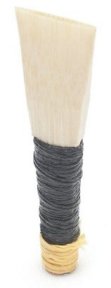Chanter reed manipulation is a learning curve. These pages will help you on your journey with this.
There are no dark secrets with reeds and careful reed manipulation will ensure that you always have an instrument performing at its best.
You can expect to ruin a good few reeds along the way however the knowledge you will acquire in doing so will be well worth the frustration.
There seems to be an expectation of having an instantly stable playable reed right out the box. While this can partially be achieved, by careful selection, you will not have a reed that will last very long and unfortunately you will cast aside many a good, if not better, a reed in the selection process.
A reed that does not suit you will be suited to another. A new reed should always be a little uncomfortable to play and needs to undergo a blowing in period. The blowing in period allows the reed to obtain the necessary moisture content and so becomes properly stable and allows the structure of the reed fibres to become accustomed to the required vibrancy necessary to obtain full sound.Therefore a little bit of effort and sweat put into your blowing in period will pay dividends, as will a little patience.
Every reed is a little different and you need to learn how to blow a sound. Blowing a sound is not only about blowing steady additionally it is about knowing what pressure will operate a reed to its fullest potential. The majority of reeds will operate best at a pressure that is slightly above the pressure required to get the reed to “just sound”, known as “leaning into a reed”. You will find that a reed will be much brighter sounding and will be easier to balance in your chanter. It does not take much effort but is an acquired skill.
Please feel free to share the following pages, which will assist you in developing the skill of reed manipulation

